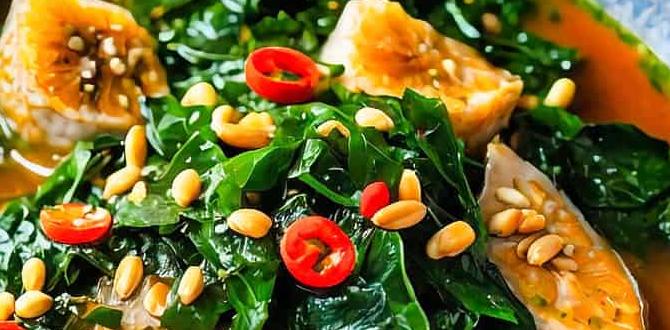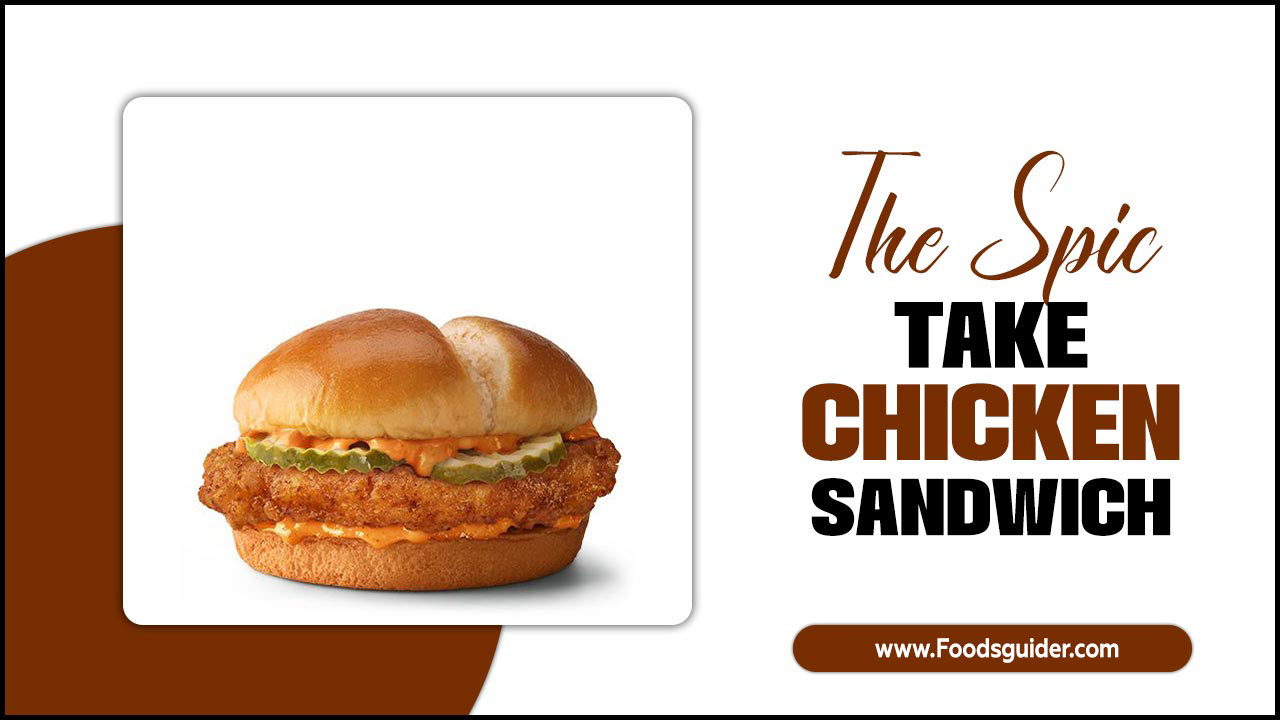Quick Summary: Unlocking the secrets of a fantastic bánh mì in Hoi An is achievable! A good class teaches you to choose the perfect baguette, balance savory meats with tangy pickles, master the art of spreadable pâté, and create vibrant, fresh toppings. You’ll gain essential skills for authentic Vietnamese flavor at home.
Dreaming of crafting that perfect Vietnamese bánh mì, bursting with flavor and texture? Many home cooks feel a bit intimidated, wondering how to get that crispy baguette just right or how to balance the complex tastes. You might think it’s a secret only Hoi An locals hold. But don’t worry! This guide is here to demystify the process and equip you with the essential skills learned in a top-notch bánh mì class. We’ll walk through every step, turning you into a bánh mì pro in no time. Get ready to impress yourself and your loved ones!
Learning to make bánh mì in Hoi An isn’t just about following a recipe; it’s about understanding the soul of this iconic sandwich. These classes offer hands-on experience, guiding you through each component. It’s a delicious adventure where you’ll pick up practical skills that translate easily from the bustling streets of Hoi An to your own kitchen. From selecting the freshest ingredients to the final, satisfying assembly, you’ll discover the magic of Vietnamese cuisine.
Why a Bánh Mì Class in Hoi An?
Hoi An, a UNESCO World Heritage site, is a culinary paradise, and its bánh mì is legendary. Participating in a local class offers an unparalleled opportunity to learn from seasoned chefs right in the heart of where this sandwich became an art form. It’s more than just cooking; it’s an immersion into the culture and traditions that make bánh mì so special.
Here’s why diving into a Hoi An bánh mì class is a game-changer:
- Authenticity: Learn traditional techniques and flavor combinations passed down through generations.
- Hands-on Practice: Get direct guidance and immediate feedback, crucial for mastering new skills.
- Ingredient Knowledge: Discover where to source the best ingredients and how to prepare them correctly.
- Cultural Insight: Understand the history and significance of bánh mì within Vietnamese culture.
- Fun and Rewarding: Enjoy a delicious and engaging culinary experience that’s incredibly satisfying.
Essential Skills You’ll Master in a Bánh Mì Class
A good bánh mì class will break down the sandwich into its core components, teaching you the specialized skills needed for each. It’s about layering flavors and textures perfectly. You’ll learn that each part plays a vital role in creating that iconic bánh mì experience.
1. The Art of the Baguette
The foundation of any great bánh mì is its bread. In Hoi An, the baguettes are legendary: light, airy, and perfectly crispy. A class will teach you what to look for and how to prepare them.
- Selection: Learn to identify a good bánh mì baguette – it’s often lighter and airier than a French baguette, with a thinner, crispier crust.
- Toasting: Understand the ideal way to toast the bread to achieve that signature crunch without drying it out. This often involves a quick toast in an oven or on a griddle.
- Cutting: Master the technique for slicing the baguette to create the perfect pocket for filling, ensuring it’s easy to eat.
2. Perfecting the Pâté and Spreads
Pâté is a classic bánh mì spread that adds a rich, savory depth. A class will show you how to make or select a delicious pâté and other essential spreads.
- Homemade Pâté: Some advanced classes might even touch upon making a simple liver pâté, focusing on its smooth texture and rich flavor.
- Mayonnaise: Learn to make or identify Vietnamese-style mayonnaise, which is often richer and creamier than Western versions. It’s crucial for that creamy mouthfeel.
- Butter/Other Spreads: Understand how a thin layer of butter or other savory spreads can enhance the overall flavor profile.
3. Mastering the Pickled Vegetables (Đồ Chua)
The tangy, crunchy pickled vegetables are a non-negotiable component of bánh mì. This is where the sandwich gets its refreshing contrast. You’ll learn the magic of quick pickling.
- The Vegetables: Typically, daikon radish and carrots are used. You’ll learn how to julienne them thinly and evenly for best results.
- The Brine: Understanding the balance of vinegar, sugar, and salt for the pickling liquid is key. A good brine provides that perfect sweet and sour punch.
- Pickling Time: Learn how long to pickle for optimal crunchiness and flavor infusion – usually just an hour or two is enough for a quick pickle.
Here’s a simple ratio often used for the pickling brine:
| Ingredient | Ratio (Approximate) |
|---|---|
| White Vinegar | 1 part |
| Water | 1 part |
| Sugar | 1 part |
| Salt | 1/2 teaspoon per cup of liquid |
4. Preparing Savory Meats and Proteins
While vegetarian bánh mì options exist, the classic versions often feature a delicious combination of seasoned meats. A good class will guide you through preparing one or two popular fillings.
- Grilled Pork (Thịt Nướng): Learn to marinate pork belly or shoulder with classic Vietnamese ingredients like lemongrass, garlic, fish sauce, and soy sauce, then grill it to smoky perfection.
- Cold Cuts (Chả Lụa): Understand the role of Vietnamese ham (chả lụa) and how to slice it thinly for easy layering.
- Other Proteins: Some classes might explore chicken, meatballs (xíu mại), or even tofu for vegetarian options, teaching you how to season and cook them effectively.
A typical marinade for grilled pork might include:
- Lemongrass (finely minced)
- Garlic (minced)
- Shallots (minced)
- Fish Sauce
- Soy Sauce
- Honey or Sugar
- Black Pepper
- A touch of oil
5. The Fresh Toppings: Herbs and Chilies
The fresh, vibrant toppings are what elevate a bánh mì from good to extraordinary. They add herbaceous notes, heat, and a beautiful finish.
- Cilantro: Fresh cilantro sprigs are essential for their bright, citrusy flavor.
- Cucumber: Thinly sliced cucumber adds a cool, crisp element.
- Chilies: Sliced fresh red or green chilies provide a kick of heat if desired. You’ll learn how much is just right!
- Maggi Seasoning Sauce: A drizzle of this umami-rich sauce is a common finishing touch that ties everything together.
6. Assembly: The Grand Finale
Putting it all together is an art! A class teaches you the proper order and technique for layering each component to ensure a balanced bite and a structurally sound sandwich.
- The Build Order: Learn the classic sequence: bread, spread (pâté/mayo), protein, pickled vegetables, fresh toppings, and finishing sauces.
- Even Distribution: Understand how to evenly spread fillings so every bite is a flavor explosion.
- Pressure: Learn how to gently press the sandwich to meld the flavors without crushing the delicate bread.
Tools You’ll Need (and What a Class Provides)
While a class provides most tools, knowing what’s involved helps you prepare for cooking at home. Fortunately, you likely have many of these already!
- Cutting Boards and Knives: Essential for prepping vegetables and meats.
- Measuring Cups and Spoons: For accurate brine and marinade ratios.
- Bowls: For marinating, pickling, and holding prepared ingredients.
- Grater/Julienne Peeler: For preparing the daikon and carrots for pickling. A good julienne peeler, like this one from America’s Test Kitchen, can make this process much faster.
- Oven/Grill/Griddle: For toasting the bread and cooking meats.
- Spatula: For spreading and serving.
A typical bánh mì class will provide:
- All fresh ingredients.
- Pre-portioned spices and marinades.
- All necessary cooking utensils and equipment.
- Recipe cards to take home.
- Expert instruction and guidance.
| Component | Key Preparation Skill | Why It’s Important |
|---|---|---|
| Baguette | Crisp toasting, proper slicing | Provides the crunchy exterior and holds fillings without getting soggy. |
| Pâté/Spreads | Smooth texture, rich flavor | Adds a savory, creamy base that complements other ingredients. |
| Pickled Vegetables (Đồ Chua) | Thin julienne, balanced brine | Offers a vital sweet, sour, and crunchy contrast to the rich fillings. |
| Meats/Proteins | Marinating, even cooking | Provides the savory, hearty core of the sandwich. |
| Fresh Toppings | Clean preparation, fresh selection | Adds brightness, aromatic freshness, and heat. |
| Assembly | Layering, balanced distribution | Ensures every bite has all the flavors and textures in harmony. |
Tips for Beginner Cooks from Hoi An Classes
Even if you can’t make it to Hoi An right now, the principles learned in these classes are universal. Here are some top tips that beginners always find helpful:
- Mise en Place is Your Best Friend: Have all your ingredients prepped and ready before you start assembling. This means slicing your meats, pickling your veggies, chopping your herbs, and having your spreads within reach. It makes the process smooth and stress-free.
- Taste As You Go: Especially with marinades and pickled vegetables, taste and adjust seasonings. Does the brine need a little more sweetness? Is the marinade salty enough? Don’t be afraid to tweak!
- Don’t Overstuff: While generous fillings are great, overstuffing can make the bánh mì difficult to eat and can compromise its structure. Aim for a balanced ratio of bread to filling.
- Freshness Matters: Use the freshest herbs and the best quality ingredients you can find. It makes a world of difference to the final taste.
- Embrace Imperfection: Your first bánh mì might not look exactly like the street vendor’s, and that’s okay! The goal is deliciousness, not just aesthetics. Each attempt will get better.
Beyond the Sandwich: What Else Might You Learn?
While the focus is squarely on bánh mì, a comprehensive class in Hoi An often provides a broader culinary context. You might get insights into:
- Vietnamese Cuisine Basics: Understanding key ingredients like fish sauce, star anise, and lemongrass and their roles in Vietnamese cooking.
- Regional Differences: Learning how bánh mì might vary slightly in different regions of Vietnam.
- Food Safety and Hygiene: Essential practices, especially when dealing with street food. You can find general food safety guidelines from the U.S. Food and Drug Administration (FDA).
- Pairing Suggestions: What to drink with your bánh mì – often a refreshing Vietnamese iced coffee or tea.
These extra tidbits enrich the learning experience, providing a deeper appreciation for the food and culture.
Frequently Asked Questions (FAQ)
What’s the most important skill for making bánh mì?
The most crucial skill is achieving the right balance of flavors and textures. This means nailing the crispy bread, the tangy pickles, the savory fillings, and the fresh herbs all working together harmoniously. Proper ingredient preparation and mindful assembly are key.
Do I need special equipment for bánh mì?
Not really! You’ll need basic kitchen tools like knives, cutting boards, bowls, and measuring tools. For pickling vegetables, a julienne peeler or mandoline can be helpful but isn’t strictly necessary. You’ll also need a way to toast the bread and cook any meat fillings.
How long does it take to make bánh mì from scratch?
If you’re making everything from scratch (including pickling the vegetables and cooking the meat), it can take 1-2 hours. However, if you have some components prepped – like store-bought pâté or cooked cold cuts – and quick-pickled vegetables, you can assemble a bánh mì in about 15-20 minutes.
Can I make bánh mì vegetarian or vegan?
Absolutely! You can substitute the traditional meats with seasoned baked tofu, grilled mushrooms, or even a flavorful jackfruit filling. For vegan options, ensure your mayonnaise and pâté substitutes are plant-based.
What kind of bread is used for bánh mì?
The ideal bread is a light, airy baguette with a thin, crispy crust. Vietnamese baguettes are often made with a combination of rice flour and wheat flour, which contributes to their unique texture. If you can’t find Vietnamese-style baguettes, a good quality, light French baguette with a crisp crust can work as a substitute.
What makes Vietnamese pickled vegetables (Đồ Chua) unique?
Đồ Chua is unique because it’s typically a quick pickle made with daikon radish and carrots in a brine of vinegar, sugar, and salt. This creates a delightful sweet, sour, and crunchy element that cuts through the richness of the sandwich, providing a refreshing contrast.
Is it difficult to find the ingredients for bánh mì?
Most of the core ingredients are readily available in most supermarkets, especially in Asian grocery stores. Fish sauce, rice vinegar, and fresh herbs like cilantro are common. If you can’t find specific Vietnamese cold cuts like chả lụa, you can substitute with other thinly sliced deli meats or simply omit them.
Conclusion
Taking a Vietnamese bánh mì class, especially in a culinary hub like Hoi An, is a truly enriching experience. You’ll leave with not just a full belly but a treasure trove of practical skills. Mastering the art of the baguette, the pungent pâté, the zesty pickles, the savory meats, and the vibrant fresh toppings will empower you to recreate this iconic Vietnamese sandwich with confidence.
These essential skills are more accessible than you might think. Whether you’re aiming for a quick weeknight meal or a flavorful culinary adventure, the techniques learned will elevate your home cooking. So, go ahead, grab a baguette, a julienne peeler, and some fresh cilantro. Your delicious, homemade bánh mì journey starts now!





